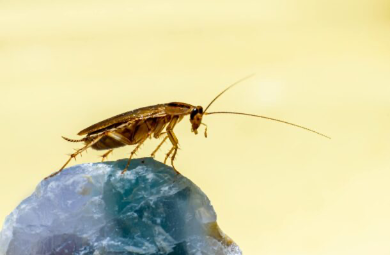





Disclaimer: Copyright infringement is not intended.
Context:
|
German cockroach |
●Scientific name: Blattella germanica ●It is one of the most pervasive pests worldwide, and its success can be attributed to several factors, including its origin, adaptability, and the inadvertent assistance of human activities. ●known as the croton bug, is a species of small cockroach, typically about 1.1 to 1.6 cm long. ●In color it varies from tan to almost black, and it has two dark, roughly parallel, streaks on the pronotum running anteroposteriorly from behind the head to the base of the wings. |
|
Origins and Evolution |
●Genetic Ancestry: The German cockroach likely originated in the Bay of Bengal region, specifically around east India and Bangladesh. ●Genetic studies have shown that it shares a close lineage with the cockroach species Blattella asahinai, indicating a divergence roughly 2,100 years ago. |
|
Spread and Global Domination |
●The first wave of migration from the Bay of Bengal occurred about 1,200 years ago, facilitated by the movement of traders and armies during the expansion of the Islamic Umayyad and Abbasid Caliphates. ●A second wave, about 390 years ago, saw them spread eastwards into Indonesia and other parts of Southeast Asia, likely carried by European trading companies like the British and Dutch East India Companies. ●The German cockroach was first noted in Europe around the mid-18th century, particularly during the Seven Years' War (1756-63). It then spread globally over the next century, aided by international trade and improved shipping methods. |
|
Biological and Behavioral Adaptations |
●Survival Traits: German cockroaches are nocturnal and have developed a preference for avoiding open spaces, which helps them stay hidden from predators and human attempts at extermination. They thrive in human dwellings due to access to food, water, and warm environments ●Resistance to Control Methods: These cockroaches have a remarkable ability to develop resistance to insecticides. The rapid evolution of resistance makes pest control challenging. Initially effective baits became less so as the cockroaches evolved to avoid the sugar-based lures used in these traps. |
Source:
|
PRACTICE QUESTION Q. Consider the following statements regarding the German Cockroach:
Which of the statements given above is/are correct? A. 1 and 2 only Answer: B. 1, 2, and 4 only |











© 2025 iasgyan. All right reserved